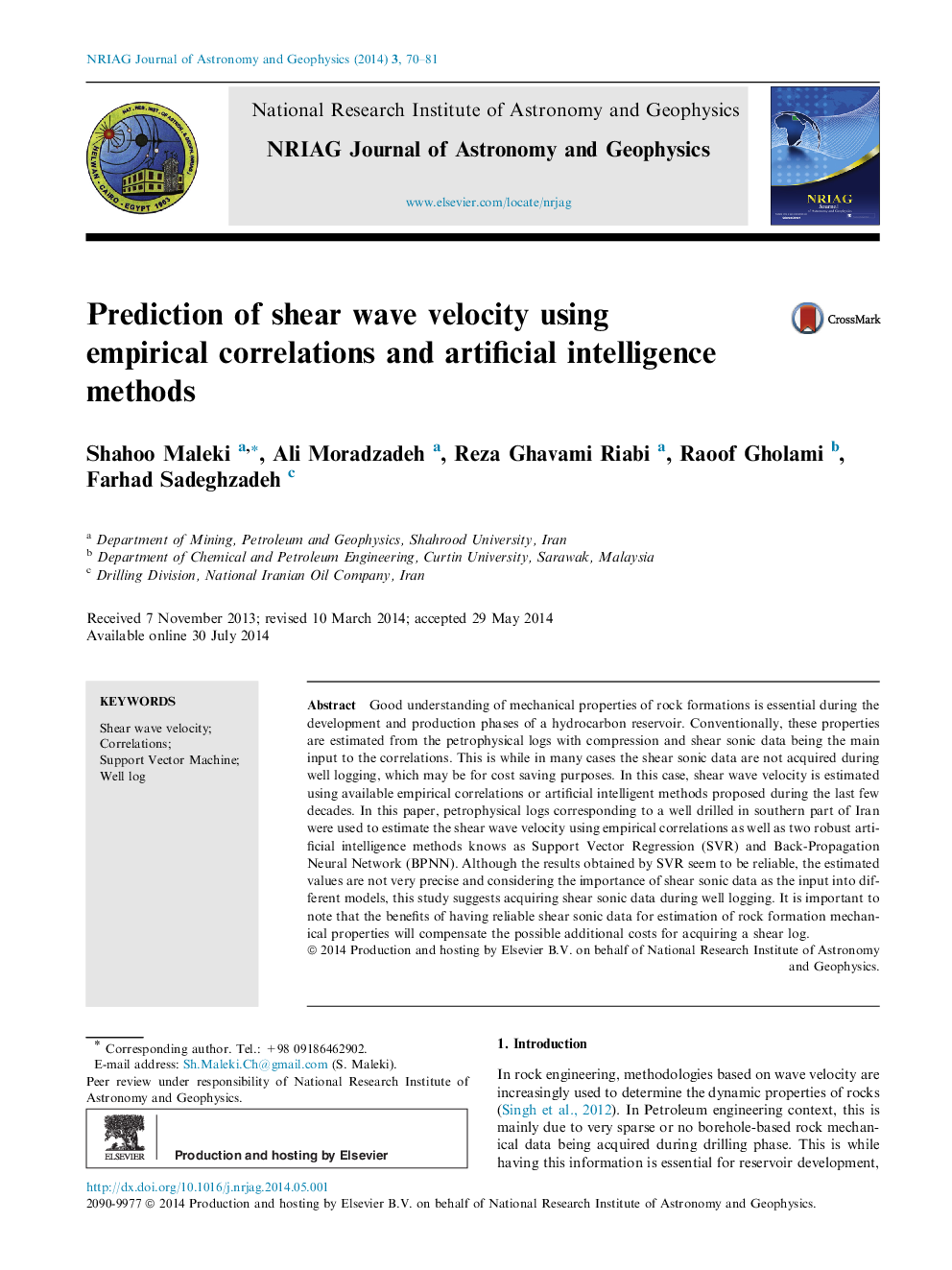| Article ID | Journal | Published Year | Pages | File Type |
|---|---|---|---|---|
| 1780634 | NRIAG Journal of Astronomy and Geophysics | 2014 | 12 Pages |
Good understanding of mechanical properties of rock formations is essential during the development and production phases of a hydrocarbon reservoir. Conventionally, these properties are estimated from the petrophysical logs with compression and shear sonic data being the main input to the correlations. This is while in many cases the shear sonic data are not acquired during well logging, which may be for cost saving purposes. In this case, shear wave velocity is estimated using available empirical correlations or artificial intelligent methods proposed during the last few decades. In this paper, petrophysical logs corresponding to a well drilled in southern part of Iran were used to estimate the shear wave velocity using empirical correlations as well as two robust artificial intelligence methods knows as Support Vector Regression (SVR) and Back-Propagation Neural Network (BPNN). Although the results obtained by SVR seem to be reliable, the estimated values are not very precise and considering the importance of shear sonic data as the input into different models, this study suggests acquiring shear sonic data during well logging. It is important to note that the benefits of having reliable shear sonic data for estimation of rock formation mechanical properties will compensate the possible additional costs for acquiring a shear log.
